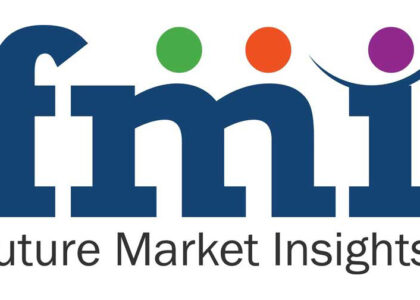The global Dehydrated Culture Media Market is anticipated to create an absolute dollar opportunity over the forecast period by exhibiting a CAGR of 7.7% from 2023 to 2033. According to the Future Market Insights report, the market is expected to be valued at US$ 4 billion in 2023 and surpass a valuation of US$ 8.4 billion by 2033.
The dehydrated culture media applications incorporate checking microbial flora in any samples. These include tablets, milk, water, food, or air, and identifying microbes at the species level. Over the projection period, the demand for dehydrated culture media is likely to propel which will provide manufacturers with numerous favorable development opportunities in the near future.
Culture media is known for its fundamental importance in most microbiological tests. In order to obtain pure cultures, grow and count microbial cells and cultivate and select microorganisms. Without high-quality media, the possibility of achieving accurate, reproducible, and repeatable microbiological test results is reduced. A microbiological culture medium is known as a substance that encourages microorganism growth, support, and survival. Culture media contains nutrients, growth-promoting factors, energy sources, buffer salts, minerals, metals, and gelling agents.
Get a Sample Copy of the Report @ https://www.futuremarketinsights.com/reports/sample/rep-gb-13985
Since there are numerous types of microorganisms, each comes with its own unique properties and requires specific nutrients for growth. There are various types based on what nutrients they contain and what function they play in the growth of microorganisms. Given the wide potential of dehydrated culture media, many pharmaceutical and healthcare companies specialize in this field, offering top-of-the-line product portfolios.
Key Takeaways
- Owing to recent technological advancements, the rising demand for regenerative drugs has propelled sharply within the media market. This has been attributed to the development of new biomedical techniques such as targeted differentiation in the development of regenerative drugs.
- The emergence of the latest technologies used for rejuvenating worm body parts with the help of injecting new cells has led to the widespread use of regenerative drugs. Furthermore, it also comprises several uses in the treatment of cardiovascular disease. These events help a global, drained cultural media market to strengthen its growth base, thus opening up new opportunities.
- Over the recent years, a positive impact has been seen on the growth of the market. Since biopharmaceutical innovators are at the forefront of in vitro research and development to find vaccines and antiviral drugs.
- Throughout the vitro evaluation of vaccines, other antiviral agents mostly require a medium in which a target virus or bacteria can be efficiently grown, and the response is determined. The increasing focus on R&D in the pharmaceutical industry is driving the demand for dehydrated cultural media.
- The dehydrated culture media demand outlook is expected to propel at a robust rate owing to the surging research and development investments made by private as well as publicly listed companies for various vaccines and drugs that work against various microorganisms.
Contact our Market Research Specialist @ https://www.futuremarketinsights.com/ask-question/rep-gb-13985
Competitive Landscape
Prominent researchers are identifying the limitations of two-dimensional (2D) cell cultures. This fact is recognized as they do not produce the morphology and biochemical features that the cell is expected to possess in the original tissue. As an alternative, the three-dimensional (3D) cell culture approach offers researchers the possibility to study cell growth and differentiation under conditions that more closely resemble the in vivo situation of cell shape and cellular environment. Currently, 3D culture models are being employed in many areas of biomedical research because they offer a more realistic milieu than 2D cultures. The era of 2D culture techniques is moving towards a new epoch of culture systems in 3D.
key Players:
- Condalab
- Thermo Fisher Scientific
- Sigma Aldrich
- Merck Millipore (Merck KGaA)
- Sisco Research Laboratories Pvt. Ltd.
- Biomark Labs
- Titan Biotech Ltd
- Neogen Corporation
- Himedialabs
- Central Drug House (P) Ltd
- Bio-Rad Laboratories Inc.
- Becton Dickinson & Company
- Life Technologies
- Corning (Cellgro)
- GE Healthcare
- Lonza
- Takara
- Life Technologies
- Atlanta Biologicals
- PromoCell
- and Zenbio.
Visit for Customization @ https://www.futuremarketinsights.com/customization-available/rep-gb-13985
Key Segments
By Type:
- Natural Medium
- Mixed Medium
- Semi-Composite Medium
By End-User:
- Hospitals
- Diagnostic centers
- Biotechnology & Pharmaceutical Industries
- Academic and Research Institutes
- Others
About Future Market Insights (FMI)
Future Market Insights (ESOMAR-certified market research organization and a member of the Greater New York Chamber of Commerce) provides in-depth insights into governing factors elevating the demand in the market. It discloses opportunities that will favor the market growth in various segments on the basis of Source, Application, Sales Channel, and End Use over the next 10 years.
Contact:
Future Market Insights, Inc.
Christiana Corporate, 200 Continental Drive,
Suite 401, Newark, Delaware – 19713, USA
T: +1-845-579-5705
For Sales Enquiries: sales@futuremarketinsights.com
Browse All Reports: https://www.futuremarketinsights.com/reports
LinkedIn| Twitter| Blogs

